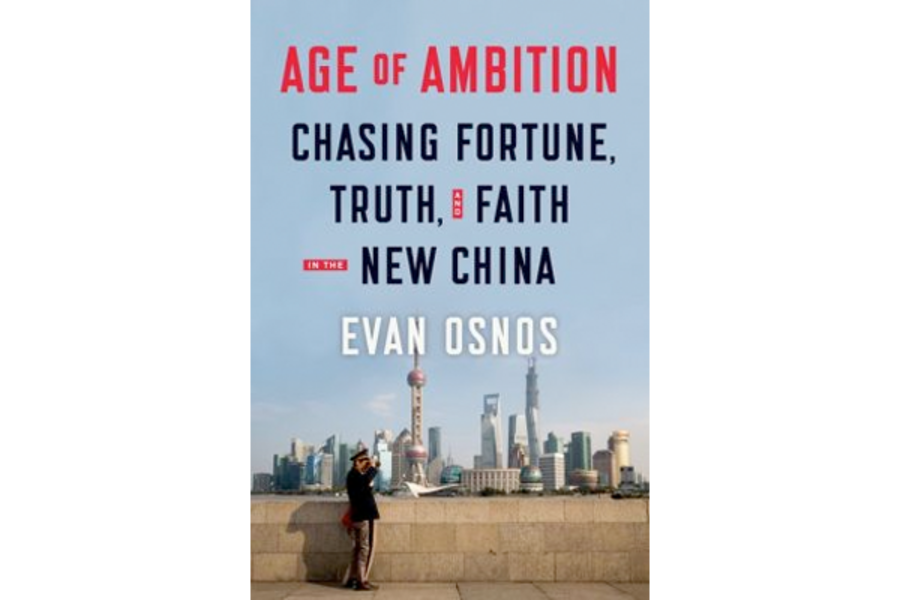"Age of Ambition" by Evan Osnos profiles the highly ambitious in today's China
Loading...
A promotional blurb for this book says that Evan Osnos “follows the moving, illuminating stories of everyday people” in China. Moving and illuminating – definitely. Everyday people? Far from it.
The people in this book include famous dissidents, self-made millionaires, and other high-profile Chinese. Their stories show the tug-of-war being waged between the aspirations of the Chinese people and the authoritarian government’s effort to stay in control.
Osnos covered China from 2005-2013, mostly for The New Yorker.
“In my research, I gravitated most of all to the strivers – the men and women who were trying to elbow their way from one realm to another, not just in economic terms, but in the matters of politics, ideas, and the spirit,” he explains.
Osnos gives extensive coverage to internationally known activists, such as the artist Ai Weiwei and the blind lawyer Chen Guangcheng, as well as the reaction by the Chinese public and government to such figures.
The stories of China’s strivers are remarkable. For example, as a child, Gong Haiyan was injured in a vehicle accident and was told by her village school that it could not accommodate someone who couldn’t walk. So her mother carried her on her back to the classrooms. Gong went on to become a millionaire by starting an online dating site.
Osnos mentioned that Gong’s “medical bills plunged her parents into debt” but failed to explain that, contrary to what some readers might assume, China does not have universal “socialized medicine.”
Another remarkable story involves a Chinese mother who makes Tiger Moms looks like slackers. In her bestselling book “Harvard Girl,” Zhang Xinwu documented how she got her daughter into that elite school by toughening her up – having her hold ice cubes, run up stairs and study in noisy locations.
The author’s descriptions are always on target. Observing the Communist Party Congress, Osnos writes, “The choreography was flawless: every few minutes, a team of young women carrying thermoses of hot water, passed through the rows of VIPS, pouring tea with the precision of synchronized swimmers.”
Another striver is Li Yang, whose Crazy English program has given him a rock star-like following, with students unleashing their “international muscles” by shouting their lessons.
This book covers the breathtaking scope of corruption in China and how it played a role in a deadly crash of a high-speed train in 2011 and in the collapse of schools during the 2008 Sichuan earthquake. The public was angered by government attempts to censor details of those disasters.
The Internet has given Chinese an unprecedented opportunity to express such anger, if they can get past censors. When bloggers tried to circumvent the ban on commemorating the Tiananmen Square crackdown by using the word “truth” for that incident, censors blocked the word “truth.”
One of the more revealing chapters about Chinese attitudes is when Osnos goes on a whirlwind group tour of Europe with Chinese tourists. They ate meals at Chinese restaurants, dismissed many sights in Europe as inconsequential, and enjoyed hearing their Chinese tour guide ridicule the laid-back European lifestyle.
China’s ambiguous attitude toward the West is mentioned frequently in the book. During most of the Mao Zedong era, “admiring the West was a punishable offense,” Osnos points out, “But by the eighties, the West was increasingly seen as a place of possibility and self-creation.”
Yet the government is quick to play up anti-foreign sentiment. In 2010, when Chinese dissident Liu Xiaobo won the Noble Peace Prize, the government described him as someone who had “spared no effort in working for Western anti-Chinese forces.”
Similarly, at the grassroots level, a young man named Tang Jie gained prominence by producing a video that compared Western news media coverage of China to Nazi propaganda, Osnos reports.
Osnos describes China’s secret propaganda office that dictates what can be reported in the media. He signed up with an overseas site to receive text messages summarizing leaked propaganda directives sent to Chinese journalists, such as orders to delete a story that shows the public is unhappy with the imbalance of wealth in China.
“This book is an account of the collision of two forces: aspiration and authoritarianism,” Osnos writes, and he believes that only one can prevail.
Mike Revzin, a journalist who lived in China, helps Americans learn about China with his ChinaSeminars.com programs.






